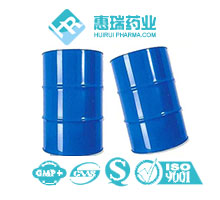- 产品介绍
English name: Levodopa
CAS No.: 59-92-7
Molecular formula: C9H11NO4
Molecular weight: 197.18800
Appearance and traits: white or off-white crystalline powder.
The temperature of 285.5 ° C (decomposition). Soluble in dilute acid, slightly soluble in water, insoluble in ethanol, ether and chloroform. Odorless, tasteless, blackened in the air.
Melting point: 276-278 °C (lit.)
Refractive index: -12 ° (C=5, 1 mol/L HCl)
Uses: 1. Parkinson's disease (primary tremor paralysis)
Symptomatic Parkinson's syndrome (non-pharmacological tremor paralysis syndrome) after encephalitis or combined with cerebral arteriosclerosis and carbon monoxide and manganese poisoning in the central nervous system. It can alleviate the symptoms of tremor paralysis, improve muscle tone, and make limbs more normal. It is effective for patients with mild to moderate disease, and is poor for severe or elderly patients.
2. Hepatic encephalopathy
Can keep the patient awake and improve symptoms. Hepatic encephalopathy may be associated with central neurotransmitter dopamine abnormalities, which can improve central function after taking it. It is also believed that levodopa can improve the brain's tolerance to ammonia, but it does not improve liver damage and liver function.
3. Neuralgia
Early use can relieve neuralgia.
4. Hyperprolactinemia
It can inhibit the thyrotropin-releasing hormone of the hypothalamus, stimulate the prolactin release inhibitor, thereby reducing the secretion of prolactin, and is used for the treatment of hyperprolactinemia, which has certain curative effect on galactorrhea.
5. Hair loss
The mechanism may be to increase the concentration of blood to the tissue of catecholamines and promote hair growth.
6. Promote the growth and development of children
It can accelerate the growth and development of children's bones by promoting the secretion of growth hormone. Treatment of children with hypopituitarism.
版权所有(C)湖南惠瑞药业有限公司
